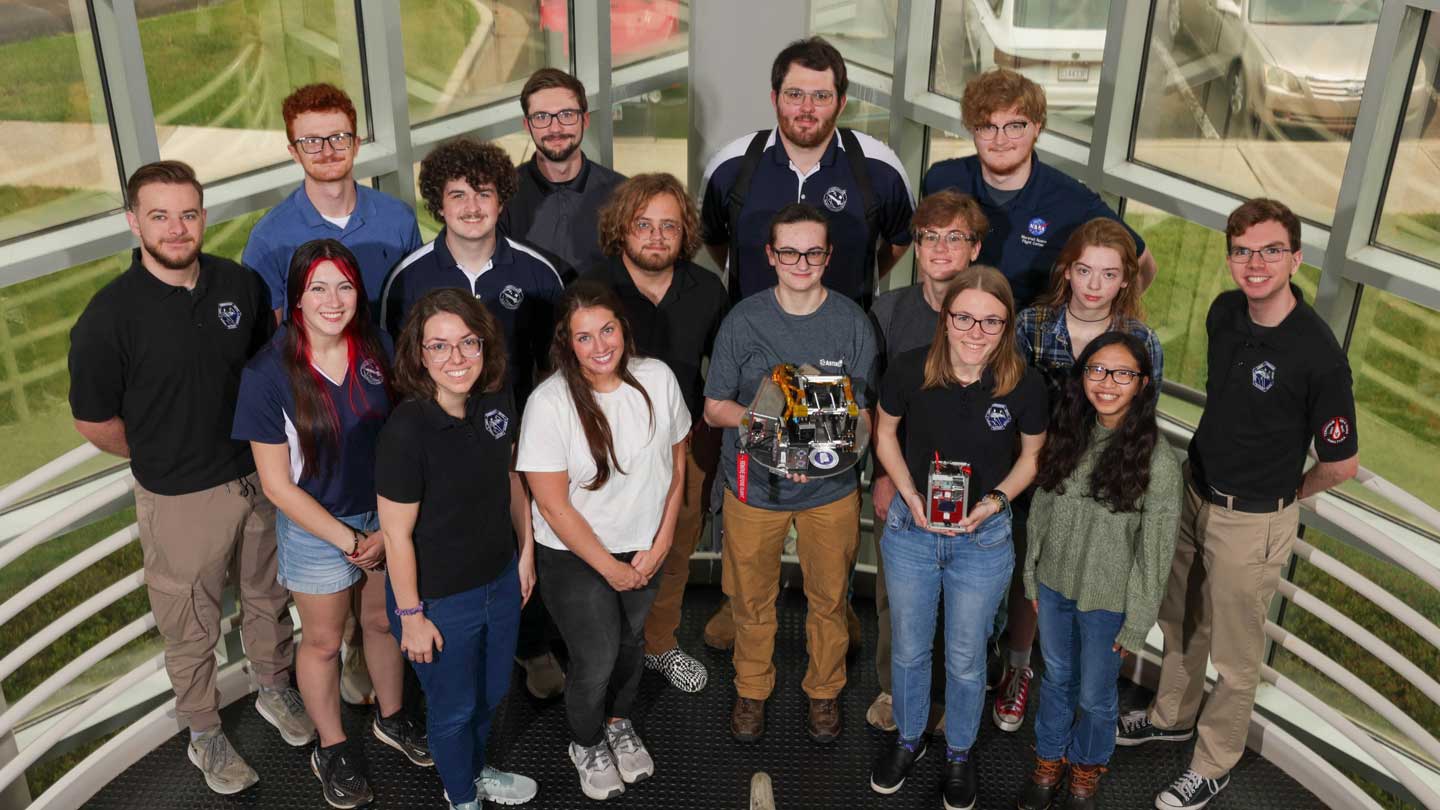
The Terminus student group at The University of Alabama in Huntsville prepares to launch an instrument payload aboard a NASA sounding rocket in August that will examine the potential of producing electrical energy by harnessing the heating experienced on reentry of the vehicle, as well as perform biological experiments.
Courtesy Terminus
The Terminus Spaceflight Research Group at The University of Alabama in Huntsville (UAH) is set to send a new payload into space, a follow-up to the successful launch and retrieval of a previous Terminus payload in August 2024. This time, the student group, a subset of the Space Hardware Club at UAH, aims to loft a CubeSat-like device that will examine the potential of producing electrical energy by harnessing the heating experienced on reentry of the vehicle, as well as performing biological experiments.
A CubeSat is a type of miniaturized satellite used for space research and exploration that follows a standardized, modular design. The project is part of the NASA RockSat Program, a hands-on initiative that connects higher education students from across the United States with opportunities to fly their experiments on NASA sounding rockets at the Wallops Flight Facility (WFF) in Wallops Island, Va.
“The data from this flight will help us investigate the viability and effectiveness of adding thermoelectric materials to spacecraft undergoing atmospheric reentry as an alternative method of in-space power generation,” says Maria Chytka, an aerospace engineering student and Terminus project lead at UAH, a part of The University of Alabama System.
The AMALTHEA payload consists of three main subsystems: a previously flown spacecraft bus (JUPITER), an energy generation demonstration (ICARUS) and an auxiliary gene radiation experiment (GUARD). The student launch is scheduled to take place on Aug. 12.
“ICARUS is an ejected 1.5U CubeSat-based deployable, with four flaps and a front plate that act as heat shields deployed in flight,” Chytka explains. “These flaps contain embedded solar panels and Peltier thermoelectric generator modules. After ejection, ICARUS will first deploy its flaps and then capture solar power using its solar panels.
"Once ICARUS begins to reenter the Earth’s atmosphere, the flap’s front side will experience a greater amount of heating than its rear. The embedded Peltier modules will exploit this thermal gradient with the Seebeck effect, i.e., thermoelectric coupling, to generate electricity from the reentry heat.”
The Seebeck effect is a phenomenon where a temperature difference between two dissimilar electrical conductors or semiconductors creates a voltage difference between them.
“We have sensors onboard the ejectable to measure the power created by these modules, as well as accelerometer, magnetometer, gyroscope, pressure, temperature and humidity data,” Chytka notes. “The sensor data is constantly relayed back via a towed radio to our spacecraft bus, JUPITER, where it is stored on an SD card and also relayed to the ground via rocket communications. This technology can be applied in electrical power systems for missions to Venus, Mars, Titan or for efficiency increases in reusable spacecraft on Earth.”
GUARD is a biology experiment focused on measuring exo-ionospheric x-ray and gamma radiation on a suborbital flight, as well as characterizing the effects of this exposure on the population genetics of live E. coli and P. aeruginosa bacteria samples, the student reports.
“An onboard Geiger counter and scintillation detector will be used to characterize the amounts and energetic intensities of the different types of radiation exposure throughout the flight,” Chytka says. “Since the flight is only about 13 minutes and exo-ionospheric exposure lasts for an even smaller period, it is expected that a small portion of the cells will die due to their exposure to extreme environmental conditions and radiation. However, the remaining living bacteria from the flight will be compared with a control group on the ground to find and isolate any genes that may have contributed to sample survival of exposure to an adverse environment with high-energy ionized radiation.
“Many International Space Station (ISS) bacteria exposure experiments have been flown, and we are looking to fill in the knowledge gap of what short-term, lower altitude exposure does to bacteria samples.”
If the flight is successful, the Terminus payload could significantly contribute to the advancement of future NASA missions.
“We believe the data taken from our experiment can be used to inform the design and testing of future planetary reentry vehicles on if the Seebeck effect is a viable way to generate power,” Chytka says. “If proven feasible, this application could then be used in future reentry missions, such as missions to Venus, Mars, Titan or increasing the electrical efficiency of any shorter-term Earth missions.
“Through GUARD, we also believe we will be able to characterize what short-term space exposure does to E. coli and P. aeruginosa as well as what genes in the species help with quick but intensive radiation exposure. Depending on the results, what we learn from the bacteria samples may be able to be applied to human spaceflight understanding. In addition, there is little published data about the amounts and intensities of radiation along the altitudes our payload will be traveling to, so our Geiger counter and scintillation data can add to the knowledge base of atmospheric radiation phenomena for our specific launch time and day,” the student concludes.